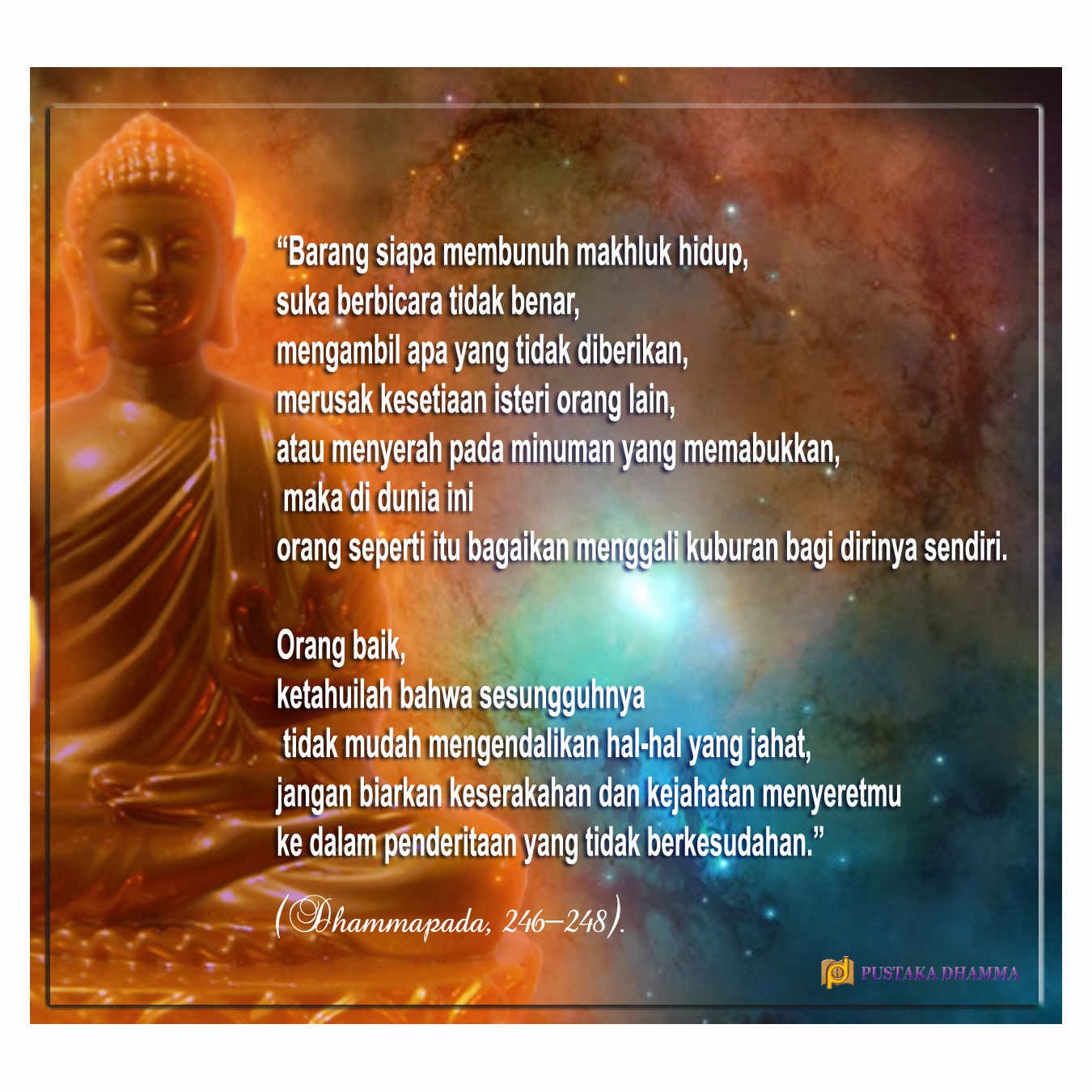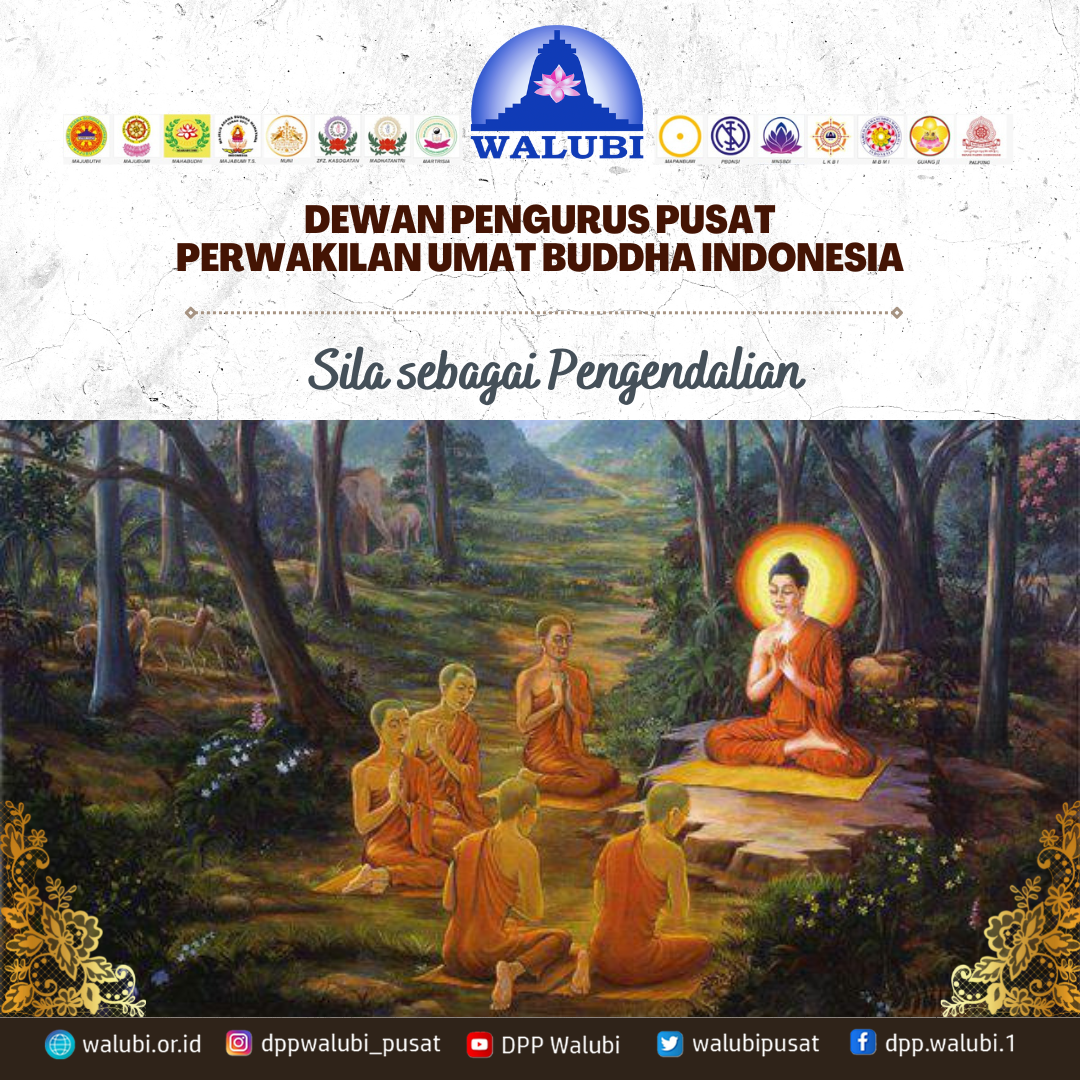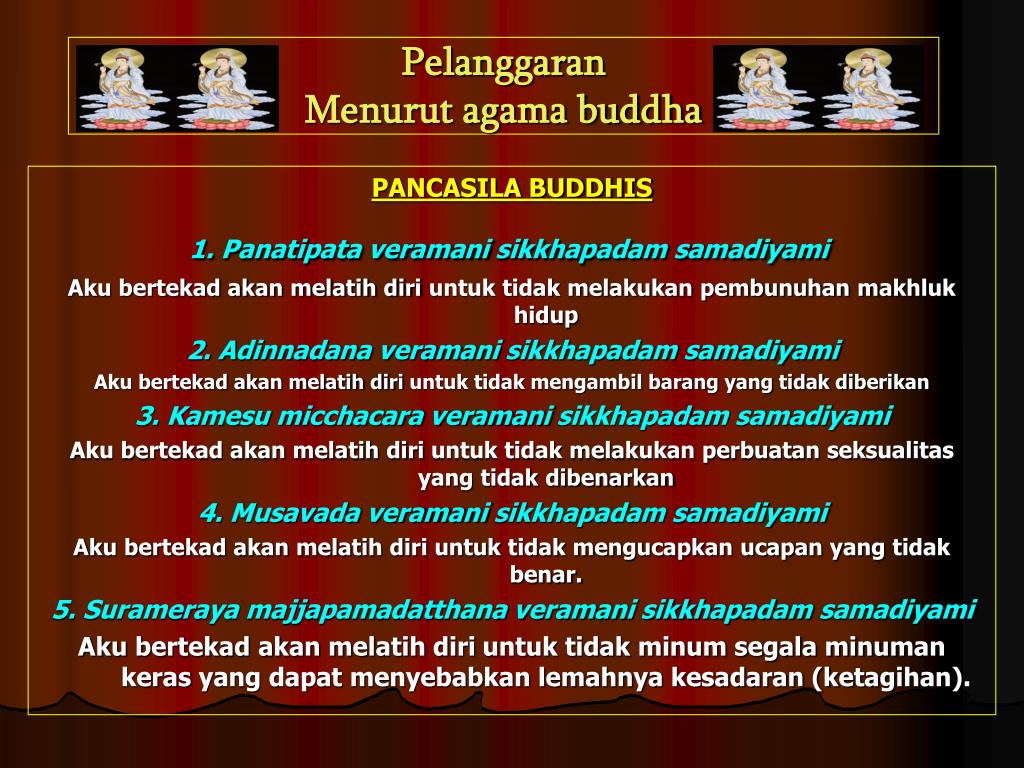
PPT Buddhism PowerPoint Presentation ID1832359
The dasa sila (ten precepts) ? Created by: gemshort. Created on: 21-05-18 19:31. Fullscreen. All Buddhists undertake the pancasila, which are five moral precepts. I undertake the precept to refrain from destroying living creatures. I undetake the precept to refrain from taking that which is not given. I undertake the precept to refrain from.

Delapan Sila Buddhis (Aṭṭhaṅgasīla) Blog Inspiration Nalanda
It expands the Fourth Precept of the Panca Sila (The Five Precepts) to specify the four types of wrong speech from which a lay disciple should abstain. The Ajivatthamaka Sila also requires abstention from wrong livelihood. DP_Bodhicari_Precepts2.pdf Bodhicari Precepts 1158 views Bodhicaris can be defined as “practitioners of the Buddha.

PUSTAKA DHAMMA Sabda Sang Buddha (50) Moralitas
Sīla, Samādhi, Paññā to Paññā, Sīla, Samādhi. September 2, 2017; revised September 14, 2019; May 5, 2022; September 10, 2022. 1. These days, it is customary to state that the Noble Eightfold Path consists of three steps: sīla (moral conduct), samādhi (Concentration), and paññā (wisdom). However, that sequence holds only for the.

Sila sebagai Pengendalian WALUBI
sīla, in Buddhism, morality, or right conduct; sīla comprises three stages along the Eightfold Path —right speech, right action, and right livelihood. Evil actions are considered to be the product of defiling passions ( see āsrāva ), but their causes are rooted out only by the exercise of wisdom (prajna). Buddhist morality is codified in.

5 Sila Buddhis Belajar di Rumah
These training rules are observed by novice monks and nuns. They are derived from the Eight Precepts by splitting the precept concerning entertainments into two parts and by adding one rule prohibiting the handling of money.. A fully-ordained monk (bhikkhu) observes the 227 rules of the bhikkhu Patimokkha; a fully ordained nun (bhikkhuni) would observe the 311 rules of the bhikkhuni Patimokkha.

Buddhism in Practice Saddhā, Sīla, Suta, Cāga, Paññā . Proto Buddhism The Original Teachings
These training rules are observed by novice monks and nuns. They are derived from the Eight Precepts by splitting the precept concerning entertainments into two parts and by adding one rule prohibiting the handling of money.. A fully-ordained monk (bhikkhu) observes the 227 rules of the bhikkhu Patimokkha; a fully ordained nun (bhikkhuni) would observe the 311 rules of the bhikkhuni Patimokkha.

The Posture of Prayer a Look at How Buddhists Pray The Bay
The 10 Buddhist Precepts (Dasa-sīla) The ten precepts of Buddhism serve as guidelines for individuals to honor themselves and others, to strive for excellence, to find inner peace, and to discern between right and wrong. These precepts form a way of life rather than a mere set of rules. They offer valuable advice and spiritual direction, aiming to enhance one's conduct and mindset in everyday.

Dasa pāramī Gatha BUDDHISM YouTube
Dasa sil mata. A dasa sil mata (Sinhala: දස සිල් මාතා ) is an Eight- or Ten Precepts -holding anagārikā (lay renunciant) in Buddhism in Sri Lanka, where the newly reestablished bhikkhuni (nun's) lineage is not officially recognized yet. The status of dasa sil matas is in between an ordinary upāsikā (laywoman) and a fully.

5 Sila Buddhis Belajar di Rumah
Other articles where dasa-sīla is discussed: sīla:.form of 10 precepts (dasa-sīla), which require abstention from: (1) taking life; (2) taking what is not given; (3) committing sexual misconduct (interpreted as anything less than chastity for the monk and as sexual conduct contrary to proper social norms, such as adultery, for the layman); (4) engaging in…

The Noble Eightfold Path to nibbana is followed in three steps sīla (moral conduct), samādhi
Dasa sila ( 10 sila) oke, dalam buku paritta pasti ada dong selain pancasila, athanga sila, pandita sila dan dasasila. 1. Panatipata veramani sikkhapadam samadiyami. 2. Adinnadana veramani sikkhapadam samadiyami. 3. Abrahmacariya veramani sikkhapadam samadiyami. 4.

Lagu Buddhis Populer Sepanjang Masa 2 YouTube
Retrieved from "http://www.tibetanbuddhistencyclopedia.com/en/index.php?title=Dasa_sila&oldid=275863"

Acts That Purify Our Existence Dana, Sila, and Bhavana LaptrinhX / News
Sila (virtue, moral conduct) is the cornerstone upon which the entire Noble Eightfold Path is built. The practice of sila is defined by the middle three factors of the Eightfold Path: Right Speech, Right Action, and Right Livelihood . Practicing Buddhists voluntarily undertake a particular set of training rules appropriate to their life-situation:

Pin on Buddhism in Practice Saddhā, Sīla, Suta, Cāga
Ajiva parisuddhi sila. Self control to refrain from adopting the wrong mode of gaining a living is called ajiva parisuddhi sila. 3. Indriya samvara sila. Self control to restrain or subjugate the senses arising in the sense-organs, namely, eyes, ears, nose, tongue, body, mind is called indriya samvara sila. 4.

Sila Buddhis Berkas Soalku
Bond, George D. / Theravada Buddhism's Two Formulations of the dasa sila and the Ethics of the Gradual Path.Pali Buddhism. editor / F. J. Hoffman ; D. Mahinda. Curzon Press, 1996.

Penjelasan Pancasila Buddhis Sila Ke3 Dalam Agama Buddha My XXX Hot Girl
Here, we discuss the ten types of puñña kamma (doing meritorious deeds). These are in three groups: dāna, sīla, and bhāvanā. Those are essential for progress in one's mundane eightfold path. One must cultivate the mundane path and remove the ten types of micchā diṭṭhi before being able to comprehend the Tilakkhana and start on the.

Pancha Sila Buddhism panchashil kya hai Gautama Buddha Part 1 YouTube
Mahayana Buddhism developed six paramitas or perfections early in its history. Later, the list was fleshed out to include ten perfections. The Six or Ten Perfections are virtues to be cultivated and practiced on the path to realizing enlightenment.To add to the confusion, Theravada Buddhism has its own list of Ten Perfections.They have several items in common, but they are not identical.